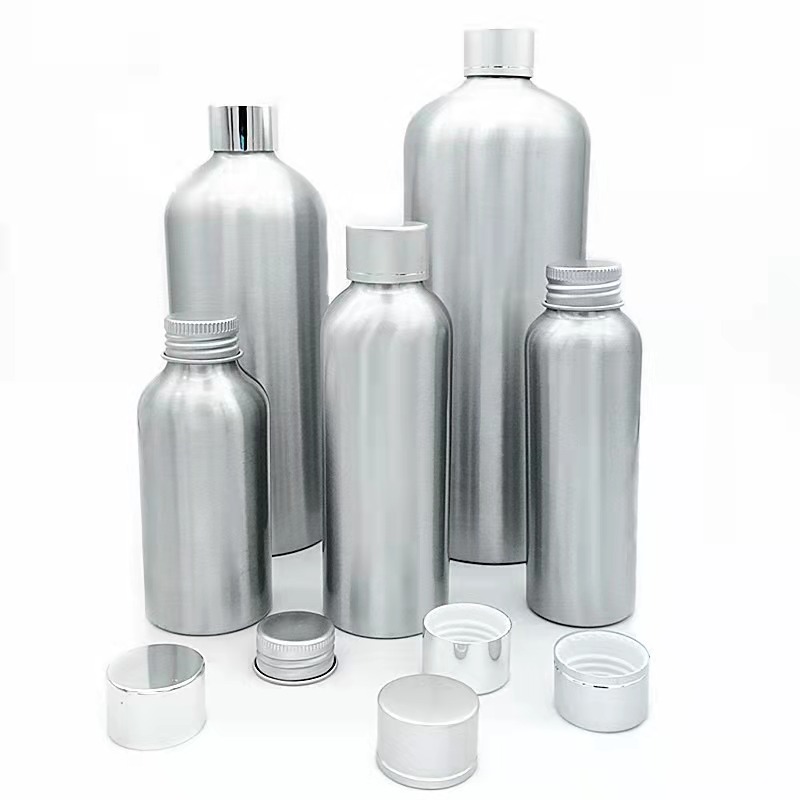
When it comes to packaging materials for your goods, plastic is one of the most common materials that come to mind. There are other materials widely used, including paper, wood, glass, metals, and more. Still, plastics have swept the industry and have been growing in demand until recent years. Lately, it has seen a decline in its popularity because consumers now understand the associated health and environmental risks. The majority of the plastic uses BPA (a chemical agent), which arguably poses serious health issues for us; it is also used in other packaging materials to achieve desired results.
In a bid to find a more sustainable and greener option for the packaging industry, aluminium has been identified as a great alternative. Thanks to its easy manufacturing processes and durable characteristics, it can be used to form aluminium bottles, cans, containers, boxes, and many other types of packaging materials for your goods. In recent years it has gained praise for its outstanding qualities that are desired for packaging and those packaging recovery notes.
Aluminum is the most common metal and the third most common material found on our planet. It is a naturally occurring element that is present in our nature in abundance. It is mainly found in minerals and then is easily extracted from it to be made available for us to use. Furthermore, one of the most astonishing facts about this packaging material is that it is entirely recyclable. Aluminum can be recycled without any reduction in its quality. That means that once you are done with your aluminum product or packaging, your waste will end up being recycled and used as some other aluminum product. The energy requirement for its recycling is also drastically small, making for prevalent sustainable packaging material.
Aluminum Association states that almost 75 percent of all the aluminum produced is still in use today, thanks to its recyclability. Aluminum also achieves a 97 percent reduction in carbon emissions. The polluting rates are the lowest of all other materials when recycled. This means that its recycling characteristics complement the abundance of aluminum in our nature. Together, they provide a widely available packaging material whose supply will not see any strains. This, in turn, means that the price of the product is highly affordable.
Since aluminum is a naturally occurring element, it can be processed and manufactured without any chemical treatments. This makes it an excellent packaging material choice for food products and cosmetics alike. It is BPA-free and is declared safe for storing and transporting consumable items by many competent authorities worldwide. Its opaque characteristic prevents food items stored inside from exposure to any UV radiation. It keeps the product safe from light, water vapor, oils and fat, and bacterium. All these possibilities make for an appropriate and prominent packaging material for dairy products, food products, pet food products, and more.
Aluminum is also a corrosion-resistant material; this has immense benefits in the logistics industry. It helps in transportation and storage within a wide range of conditions. The food and pharmaceuticals industry around the globe uses aluminum packaging to keep their products clean, non-toxic, fresh, and away from any external impacts.
Aluminum is lighter in weight than the conventional metals used for packaging. This means less energy is required for transportation, which helps maintain a low carbon footprint and reduces transportation costs. Aluminum protects products stored inside against light, moisture, and oxygen, which guarantees consumable items’ safety, quality, and aroma. Furthermore, aluminum packaging can preserve its integrity for an extended period with little to no preservation. All that because of its corrosion-resistant features that provide longevity. Plastic is lighter in weight than aluminum, but aluminum quickly becomes the most preferred packaging material, considering the negativity surrounding plastic materials.
Aluminum has a low melting point and is a very flexible material. Thus it is easy to make a mold out of it, which helps in the manufacturing processes. From a marketing point of view, these features help make cheap custom tin containers based on customer’s requests. Its bright metallic shine and feel is an attractive and popular design feature amongst consumers. It is also compatible with all the industrial printing technologies, which allow designers a great deal of freedom with their patterns and brand symbols. Aluminum packaging is also available in different colors.
Overall, the abundant supply of aluminum provides for a cheap packaging material that is highly sustainable with its excellent recycling features. It is safe for the majority of the consumables products and thus a superior choice by the relevant industry. You as a consumer can be sure that products enclosed in aluminum packaging are fresh and safe to use; at the same time, you can feel proud that you are taking part in a sustainable and greener packaging material and are putting your part against the plastic pollution crisis.
All these features can significantly improve your product line without incurring significant product costs and thus makes aluminium packaging one of the best choices for your product, be it for food, cosmetics, dry products, or any other item. By choosing aluminium as your packaging material, your brand or company would make a clear statement and address the customers’ carbon footprint and safety concerns. This is undoubtedly appreciated by the ever-growing conscious consumers and translates into more confident sales and profits.


